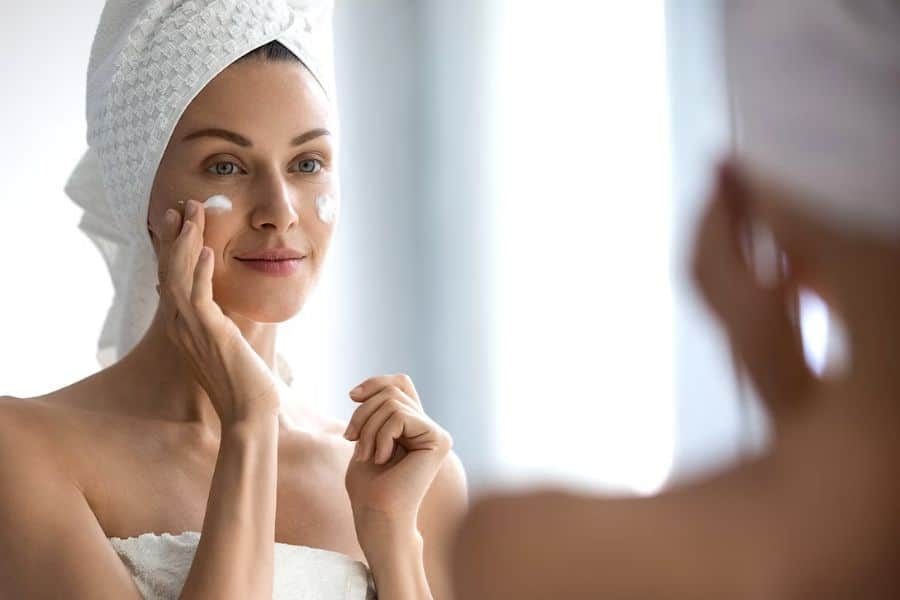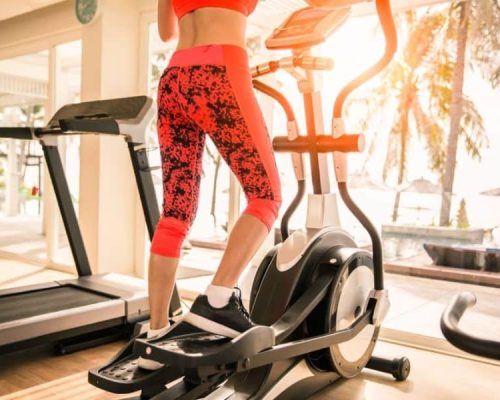Understanding Acne-Prone Skin
Alright, so tackling skincare for acne-prone skin involves knowing what’s stirring up those pesky pimples. Let’s break it down and figure out what lurks behind acne and the types you might run into.
Causes of Acne
Acne’s like that annoying guest no one invited — it shows up on about 9.4% of humans, famously popping up among teenagers and young adults too. Now, why does it gatecrash your skin’s party? Here’s the lowdown:
- Inflammation: When your skin’s feeling spicy, it gets red and puffy.
- Clogged Hair Follicles: Dead skin cells and oil team up to clog those follicles.
- Bacteria: This sneaky stuff increases the chaos, making zits worse.
- Excess Sebum: That greasy jam called sebum gets working, leading to a breakout fest.
All these nuisances? They get a helping hand from your genes, daily habits, the environment, how stressed out you are, and those crazy hormones jumping around.
Most breakouts like to party on your face, forehead, chest, upper back, and shoulders — basically wherever oil glands do their main business.
Types of Acne Conditions
If acne had a family tree, it’s got a few branches. Knowing which type you’re dealing with helps when you’re picking how to fight back. Here’s the lineup:
| Type | What’s Going On | Usual Hangouts |
|---|---|---|
| Whiteheads | Pores playing hide-and-seek under the skin | Face, Shoulders |
| Blackheads | Pores that took a peek, revealing darkened oil | Nose, Chin |
| Pimples (Papules) | Red, tender bumps crashing the face party | Face, Back |
| Pustules | Those with a pus sidekick, saying cheese on your skin | Face, Chest |
| Cysts | Painful lumps below the surface, leaving marks like a bad breakup | Face, Back |
(Mayo Clinic](https://www.mayoclinic.org/diseases-conditions/acne/symptoms-causes/syc-20368047))
Wanna know more about what to avoid or how to tackle those zits? Swing by our pages on skincare ingredients to dodge and top skincare tips for combo skin.
Effective Topical Treatments
You’re on a mission to tackle acne-prone skin, and picking the right topical treatments is like finding treasure. Let’s break down three gems in the world of skincare: benzoyl peroxide, topical retinoids, and azelaic acid. This time, we’re going beyond the surface to give you the scoop.
Benzoyl Peroxide
Benzoyl peroxide? Well, folks, it’s like the trusted old friend who always has your back. It’s a superstar for knocking out mild to moderate acne. You’ll hear pharmacists raving about it, especially for zapping those pesky blackheads, whiteheads, and spots. It’s pretty hardcore at busting acne-causing bacteria and taming the redness beast.
But hang on! There’s a little hiccup. Back in March 2024, the lab peeps at Valisure gave a heads up about benzoyl peroxide’s potential party trick of turning into benzene—a not-so-friendly chemical—when things heat up. To keep things chill, stick with low concentrations, store in a cool spot, and don’t hang onto it like a vintage wine past its expiration date.
| Product Type | Concentration Range |
|---|---|
| OTC Gel | 2.5% to 10% |
| Prescription Gel | 5% to 10% |
| Facial Wash | 4% to 10% |
Topical Retinoids
Ah, retinoids, the tough cookies of the skincare world. These bad boys, like tretinoin and adapalene, speed up cell turnover and keep your pores squeaky clean by sweeping out dead skin cells. But, fair warning for the expectant mamas—retinoids are a no-go due to the risk of birth defects.
Starting slow is key. Kick-off with a timid concentration to dodge irritation and slowly up the ante as your skin becomes buddies with retinoids. Plus, they’re pretty nifty at reducing inflammation and helping those acne scars fade like last season’s fashion trends.
| Retinoid Type | Form | Concentration |
|---|---|---|
| Tretinoin | Cream, Gel | 0.025% to 0.1% |
| Adapalene | Cream, Gel | 0.1% to 0.3% |
Curious how to slide those retinoids into your daily regimen? Check our savvy guide on skincare routine for men.
Azelaic Acid
If your skin’s as sensitive as a drama queen on a soap opera, Azelaic acid might just be your new best friend. Coming in cream or gel varieties, it’s a gentle soul that tackles acne by sloughing off dead skin cells while giving acne-causing bacteria a run for their money.
This acid is a champ for those who want to dodge the dryness or redness that sometimes tags along with other treatments. So, if your skin flares up like a chili fan, azelaic acid could be the soothing balm you need.
| Azelaic Acid Form | What’s in It |
|---|---|
| Cream | 15% to 20% |
| Gel | 15% to 20% |
Add a splash of azelaic acid to your routine, and watch the magic happen—without the harsh side effects. For more nuggets of wisdom, check out our chat on skincare ingredients to avoid.
Picking your topical treatments wisely can turn the tides on acne-prone skin. Knowing the perks and quirks of each option helps you make the best choices for your skin story. Want more tips? Swing by articles like skincare routine for oily skin or skincare for hormonal acne for more pointers!
Hormonal Treatments for Acne
If you’re battling with acne and feeling like simple creams just aren’t cutting it, hormonal treatments might be your new best friends. Let’s get into two popular options: Co-cyprindiol and Isotretinoin.
Co-cyprindiol
Co-cyprindiol, which you might know by names like Dianette, is a go-to when pesky pimples just won’t budge for antibiotics. It’s the acne warrior for those dealing with oily skin troubles, which are prime acne contributors.
This treatment helps by juggling your hormones to lower sebum production (that’s the oil your skin makes). With less of that gleam, you’ll likely see your acne starting to clear. The NHS notes improvements typically kick in anywhere from 2 to 6 months when you stick with it.
| Treatment | Time to Show Change | Gotchas to Watch For |
|---|---|---|
| Co-cyprindiol | 2 – 6 months | Might cause nausea, headaches, weight fluctuations |
Got oily skin woes? Check out our tips on skincare for hormonal acne.
Isotretinoin
Enter Isotretinoin, the heavyweight champ for seriously stubborn acne cases. Prescribed in pill form, it’s known for its knock-out punch but isn’t without its share of side effects, which is why it’s essential to have a doctor’s eagle eye on you while using it (NHS).
How does it work? It cuts down oil production, reduces bacteria, and kicks inflammation to the curb.
| Treatment | Time to Notice a Shift | Possible Bumps Along the Road |
|---|---|---|
| Isotretinoin | 1 – 4 months | Can dry skin out, cause achy joints, or blurry vision |
Although Isotretinoin gets the job done, it can be intense, so it’s important to chat about all this with your doctor. Tackling acne requires knowing your unique skin quirks, so a dermatologist’s insight is golden.
Need more guidance? Peruse our advice on skincare ingredients to avoid.
Grasping these treatment options helps you take charge of your skin story. Your journey is all yours, so team up with experts as needed and keep clicking for more insight on issues like skincare for rosacea and nailing the best skincare routine for combination skin.
Ingredients to Steer Clear Of
When dealing with pesky acne-prone skin, knowing which ingredients to dodge is your secret weapon. This helps keep those stubborn breakouts at bay and your skin looking fresh.
Sneaky Acne Triggers
Some ingredients have a reputation for stirring up trouble in the acne department. Keep an eye on these skin troublemakers:
- Sodium Lauryl Sulfate (SLS): This common cleanser can zap away your skin’s natural oils, leaving it high and dry—and not in a good way.
- Isopropyl Myristate and Isopropyl Palmitate: These smooth operators can sneak into your pores and cause a clogging fiasco, not ideal for sensitive skin.
- Alcohols: The usual suspects like SD Alcohol 40, denatured alcohol, ethanol, and isopropyl alcohol can dry you out and irritate your skin, making acne even more annoying (Byrdie).
- Coconut Oil and Cocoa Butter: These might sound yummy, but they can clog up your pores faster than you can say “breakout” (Byrdie).
- Algae Extract: This one’s a chameleon; it has some good traits, but it can also gunk up your pores (Byrdie).
| Ingredient | Acne Drama |
|---|---|
| Sodium Lauryl Sulfate (SLS) | Dries and irritates |
| Isopropyl Myristate | Pore clogger |
| Alcohols (SD Alcohol 40, denatured) | Dryness, irritation |
| Coconut Oil | Pore blocker |
| Algae Extract | Pore blocker |
Want to dig deeper? Check out our guide on skin foes for the full scoop.
Skin Agitators
These ingredients have been caught red-handed in the irritation department, making acne worse. It’s best to give them the cold shoulder:
- Synthetic Fragrances: These added scents can throw a fit on your skin, leading to inflammation (Byrdie).
- Essential Oils: Although they come from nature, these oils can rub sensitive skin the wrong way, inviting more acne to the party.
- Natural Fragrances: Just like their synthetic cousins, these can annoy your skin and cause irritation (Byrdie).
It’s all about keeping things gentle, folks. For a skincare routine that loves your skin back, always go for products that won’t irritate. If uncertain, a dermatologist’s advice can be a real game-changer. Check out tips on gentle and hydrating ingredients perfect for acne-prone skin.
Understanding the bad guys in your skincare can be your ticket to happier, healthier skin.
Skincare Tips for Acne-Prone Skin
Taking care of acne-prone skin is a bit like walking a tightrope. You gotta balance the right products to dodge breakouts and keep your skin happy. Sounds tricky, right?
Gentle Formulations
When it comes to choosing products, think gentle. Your skin doesn’t need harsh scrubs or strong cleansers that act like a sledgehammer—those can make your skin throw a tantrum with breakouts. Instead, reach for mild cleansers and treatments that give your skin a hug rather than a slap. As folks over at Good Housekeeping remind us, especially once you hit 25, you want to avoid over-stripping your skin of oils. Doing so just throws it into a fit, leading to more breakouts. Check for words like “non-comedogenic” which is fancy speak for “won’t clog your pores.”
Look for these buddies in your products:
- Cetyl Alcohol: This doesn’t sound like a friend, but it helps lock in moisture—kind of like a hydrating hug.
- Aloe Vera: The cool kid in the skincare scene, known for calming redness and throwing anti-inflammatory vibes.
- Green Tea Extract: Your skin’s bodyguard, full of antioxidants fighting off the bad stuff.
Hydrating Ingredients
Hydrating is the name of the game, even if you think your skin’s got an oil factory going on. Missing out on hydration can actually keep that oil production line busy, making breakouts worse. A non-comedogenic moisturizer is your new best friend. For some friendly advice from CeraVe, using one of these daily keeps your skin balanced and happy.
Hydration helpers you wanna meet:
- Hyaluronic Acid: Sounds like a spaceship part but it’s great at holding onto moisture without clogging your pores.
- Glycerin: This buddy attracts moisture like a magnet, making sure your skin’s not feeling thirsty.
- Niacinamide: Or Vitamin B3, known for smoothing things over and amping up your skin’s natural defenses.
Here’s a handy guide for some star players in hydration:
| Ingredient | What It Does |
|---|---|
| Hyaluronic Acid | Locks in moisture, doesn’t clog pores |
| Glycerin | Draws in moisture, keeps skin bouncy |
| Niacinamide | Calms the skin, boosts its defenses |
And hey, keep that hydration going. You might want to peek at our piece on the best skincare routine for combination skin and those anti-aging wonders for more on keeping your skin happy.
Stick to a gentle and hydrating routine for skin that’s less likely to protest with breakouts. Pick wisely and keep your skin balanced, healthy, and looking its best. For more product picks, check out our lists of organic skincare goodies and cruelty-free choices.
Dermatologist-Recommended Routine
Got acne-prone skin? A regular skincare routine ain’t just for show! Dermatologists swear by including superstar ingredients like salicylic acid, benzoyl peroxide, and adapalene to keep those pesky pimples at bay and your skin glowing like a diamond.
Salicylic Acid
Salicylic acid, the not-so-secret weapon in many acne-fighters’ arsenal, excels at exfoliating skin and opening clogged pores. It’s a rockstar against blackheads and whiteheads, so having it around is like having a best friend who’s always ready to take on those uninvited guests.
| Salicylic Acid | How It Works | Use It How Often? |
|---|---|---|
| 0.5% – 2% | Great for mild acne | Once or twice each day |
A cleanser or toner packed with salicylic acid scrubs away dead skin gunk, soothes redness, and stops breakouts from crashing your party. In the morning, slap on some lightweight moisturizer and sunscreen after using it. At night, pair it with an acne-busting buddy like adapalene. Need more help? Check out our guide on the best skincare routine for combination skin.
Benzoyl Peroxide
Meet benzoyl peroxide, the bacteria’s worst enemy. This stuff fights acne by cutting down on bacteria, keeping those mild to moderate breakouts in check. But heads up—it might dry your skin or cause some irritation, so handle it with care!
| Benzoyl Peroxide | What It Does | How Often to Use |
|---|---|---|
| 2.5% – 10% | Tackles bacteria and redness | Once a day |
Ease into this one by starting with a lower dose, and ramp it up if your skin’s chill with it. Make sure to store it properly and toss it when it’s past its prime to keep away any safety issues. For more safe skincare hacks, peep our skincare ingredients to avoid.
Adapalene
Adapalene is the new-age retinoid in town, handling acne by speeding up cell turnover and keeping those pesky pores clear. It’s easier on the skin than older retinoids like tretinoin, meaning fewer folks end up with irritation (NHS). Just a heads up—if you’re pregnant, steer clear of retinoids to avoid any risks!
| Adapalene | Why It Rocks | Best Time to Use |
|---|---|---|
| 0.1% – 0.3% | Cuts redness and clears pores | Once a day (at night) |
Add adapalene to your evening plan after cleaning your face and give your skin a few minutes to chill out before applying. Then slap on a non-comedogenic moisturizer to keep the hydration going. For all things hormonal acne, see our guide on skincare for hormonal acne and discover the magic of retinoids.
Stick with these dermatologist-approved moves, and you’re on track to tame acne-prone skin while keeping it healthy and downright radiant. Stay consistent, listen to your skin’s needs, and watch the magic happen!










